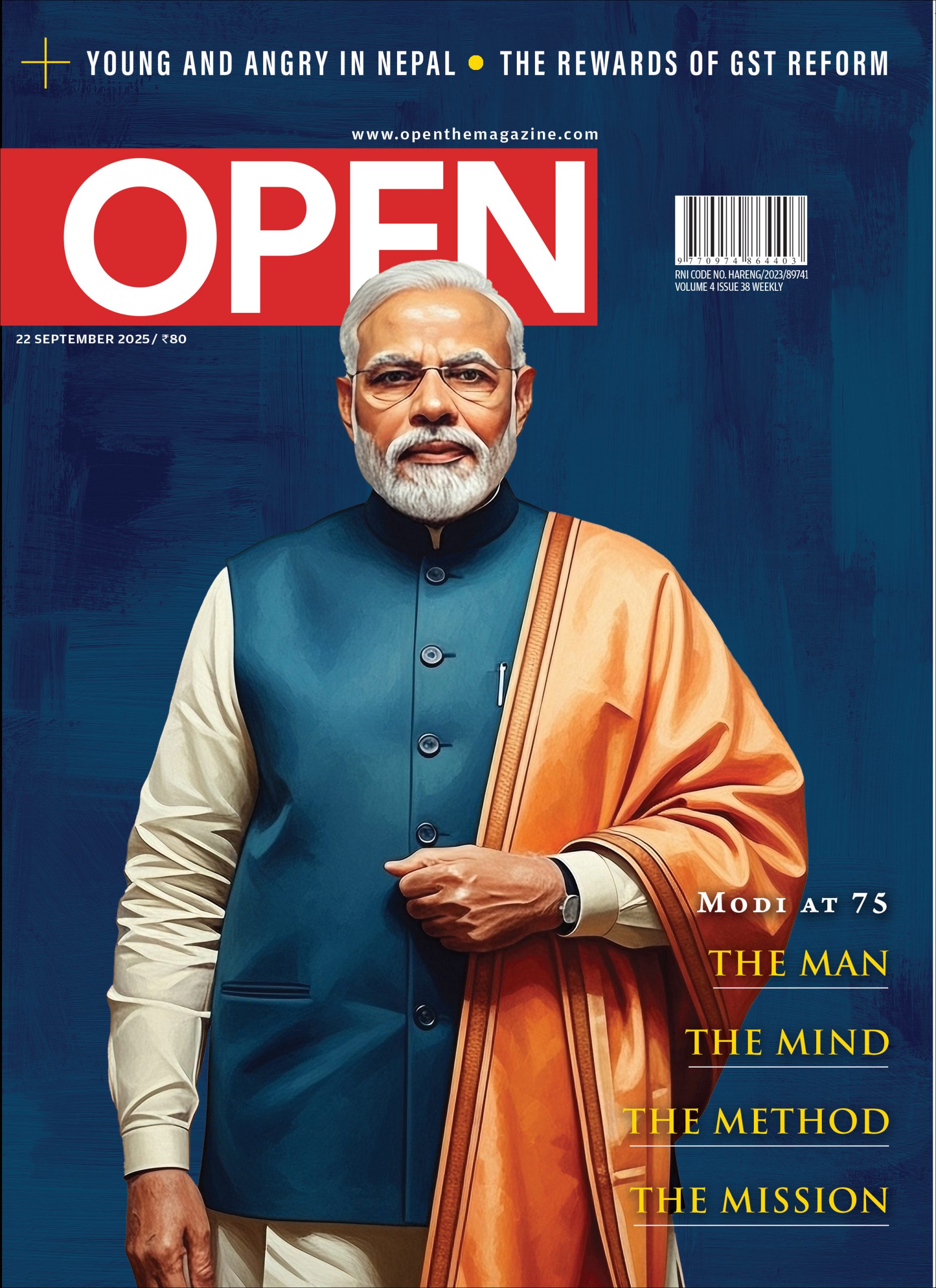CHANGE: A BIOGRAPHY
Life stories that map the great Indian arc
/wp-content/uploads/2015/11/Change-A-biography-main.jpg)
Life stories that map the great Indian arc
“India has changed more in the last six decades than in six previous centuries,” President Pranab Mukherjee asserted in his Republic Day eve address of 2014. Seven decades of Independence, more than 10,000 years of recorded history, more than a billion people, and 686 districts, this is a nation that knows Change as an intimate phenomenon. India has not just changed, but transformed the core of its socio-economic, cultural and political essence.
The assault on the status quo, collective at times, has been dogged and radical. Over the decades, it did not just redefine but reconstruct the contours of the country and its traditional distinctions of caste, gender and class, as also its economics, agriculture, industry, infrastructure, transport, labour, culture, literature, market, consumerism, materialism, fashion, lifestyle, architecture, art, and, crucially, communication, through which stories of change reached a billion people.
The political shifts that the nation went through as part of its transformation were not independent or insulated from the social and economic changes. They were, in fact, intertwined. From the predominant moorings of inheritance to that of individual acquisition, from the socialist-thinking- endorsed welfare narrative of entitlement to the post-millennium highs of skill and talent, from the Licence Raj to open market competition, from austerity to materialism, from frugality to consumerism, from modesty in lifestyle to pomp and grandeur, from the multi-tier steel tiffin box-driven, many-day train journey to the affordable hour-long, domestic flight, from pilgrimage holidays to foreign weekends, from teetotalling to finding an excuse to uncork the best bubbly, from khadi and desi to global brands, from the ubiquitous canvas hold-alls of British descent and humungous steel trunks to American Touristers and Samsonites, from Bata or nothing to Jimmy Choo, from bare faces to the in-your-face kabuki masks, from savings to splurge, from the hand- me-down Lambretta and Hamara Bajaj to Audi and Lamborghini and fuel- guzzling SUVs, MUVs and ATVs.
The changes over time affected and impacted—albeit not always positively —a billion people in one way or another. A billion stories waiting to be told, each one a tale pushing and shoving to grab an audience. A billion works-in-progress through seven decades. The macro narrative of India has been shaped and re-shaped tellingly through close to three generations now. From the rare stories of individual triumph and change in the 1980s like those of Dhirubhai Ambani, crisscrossing the moral gauge with bullishness, to the more democratic individual stories of the ‘Can Do’ spirit of the nineties generation, to the ‘I Don’t Want Your Permission, I Just Want You Get Out of My Way’ sledgehammer rap rhythms of the Millennials, India’s Change Agents have been driven by unrelenting dreams. But more crucially, by jet-driven aspirations of every sort, social, economic, political and cultural. The emerging story of personal mobility, the clear clarinet call of the self-made success. It is the emerging story of ‘Come, Make In India’. The unleashing of the ‘Me’ spirit. The unleashing of a society.
The very definition of Change itself has changed radically over the decades under intense pressure from society, and its social, economic, political and cultural fundamentals. MN Srinivas, India’s celebrated sociologist, for example, identified three core processes of social change—western- isation, modernisation and secularisation—through which social scientists sought to make sense of a changing Indian society. Industrialisation and urbanisation were seen as essential if such changes were to materialise in the largely rural and agrarian society that India was at the time of its independence from colonial rule.
In real terms, the per capita growth in income was modest in the past decade, but by no means insignificant. From Rs 16,173 in 2000-01 it rose to Rs 24,295 in 2007-08 to Rs 26,618 in 2009- 10, a rise of 64 per cent over the decade. It could have soared higher if the global economic crisis had not pulled the growth rate down. A sustained high growth path in the course of the decade would have ensured the initiation of the remaining reforms of the economy’s unfinished reform agenda, especially those instrumental in making India a bigger platform for manufacturing, which would have spurred economic growth, resulting in the unqualified triumph of the individual.
In truth, it is not so much the collective, but the individual Indian’s determination to break barriers, to storm bastions, to bring down walls and shatter ceilings of every sort that captured the nation’s imagination and blazed trails that re-wrote the India narrative: the story of today’s India. These stories, told and retold, tweeted and re-tweeted, have primarily been birth-marked by the individual’s indomitable urge for success, the never-say-die quest for achievement, and are driven by irrepressible economic, political and socio- cultural aspirations that transgress fault lines, vault over unyielding class and caste walls, break gender taboos, and showcase the power of One.
Nirupam Bajpai and Jeffrey D Sachs, in their paper, ‘India’s Decade of Development: Looking Back at the Last 10 Years and Looking Forward to the Next 20’ (Columbia University Working Paper 2011), contend that looking back at the first decade of the 21st century, they believe that this decade can indeed be called India’s Decade of Development. India, they hold, is moving from its phase of market reforms (from 1999) to a new era of sustainable development. ‘The priority must not only be on growth, but on the triple bottom line of growth, equity/inclusion and environmental sustainability,’ they maintain, while pointing to enormous challenges in rural development, urban sustainability, national infrastructure, human capital, and those related to India’s population.
We at OPEN have mapped this change, fittingly enough, through exceptional life stories in this New Year Double Issue. Stories, spanning generations of transformation, of overcoming hurdles, of empowerment. Stories about the underdog transforming into the Top Dog. Stories of the moss- encrusted, crumbling masonry of thus-far unyielding barriers of caste, society, class, even ancestry, hierarchy, the prevailing pecking order and feudalism. Stories of gritty triumph over existential phobias.
We have identified and told stories of people who caught the imagination of India from different parts and strata of society. Those who blazed socio-economic and political trails in different spheres in the country were also those who reshaped and re-sized themselves to fit the changing times. They weren’t just survivors, they flourished. Many of the erstwhile royalty, for instance, shape-shifted to suit the changing horizon by turning palaces into heritage hotels or diving headlong into politics to cash in on their regional familiarity. They ensured that their names were pre-tagged by plain old ‘Mr’, ‘Mrs’ or ‘Ms’ to reach ordinary voters, once their subjects.
Other royals, however, those who failed to transform their pluses into real dividends in post- Independence India, crash-landed. Each piece rolled out is a fine example of narrative journalism, weaving the social and cultural context into the profile.
Taken together, these are the stories of India, its evolutionary trajectories, its ideas, attitudes and aspirations, and sometimes, even its hiccups.
That last is best defined by Kumud Singh, a descendant of the Darbhanga dynasty of Bihar, a family that once presided over the destiny of people spread over more than 6,000 sq km, across the state. The palaces under its command included the Rambagh Palace, the Lakshmeshwar Vilas Palace, the Nargona Palace and the Bela Palace. The family owned properties in almost every prominent city in British India. The Darbhanga kings also financed the Indian National Congress, and owned an airport and a fleet of aircraft and luxury cars. Their fortunes began to decline after Independence— and Kumud Singh now doubles as a homemaker and part-time journalist.
Singh’s story captures the rise and fall of the Darbhanga royalty after Independence; how the mismanagement of properties and resources over the decades, by family members and trustees, has forced its descendants to lead a lower middle- class existence. This one is a breakaway from the success stories that we feature in this issue.
Over the last two decades, education is one sector whose landscape has gradually changed, breaking social barriers. The Sarva Shiksha Abhiyan started with a modest budget of Rs 150 crore, ballooning to well over Rs 20,000 crore and helping the country make impressive strides in elementary education with the opening of a large number of schools, large-scale hiring of teachers, provisioning of free school books for students of BPL families, and mid-day meals. The real democratisation of education and its fundamentals in the country, untethering the sector from selective access based on caste and class through affirmative action, has transformed the literacy rates across the country. That may have left some 55 million plus not in school (many of them girls), but it has still shrunk Indian illiteracy significantly, which is good news over the long term.
Reading Chetan Bhagat’s books may not come highly recommended for first-generation literates. He has been called a one-man factory of bestsellers. A critic once tweeted, ‘No one ever produced more ‘voracious readers’ than Chetan Bhagat—just like no one produced more music lovers than Himesh Reshammiya.’ But the man who scripted his own success story, from a frustrated Average Joe with ‘some highly forgettable occupation’ into a pulp writer whose novels were guzzled by not just the chap on the road but also by notable film producers, remains unfazed. Especially since he is credited with knocking the bestseller novel off its high pedestal and making it accessible to all and sundry. “My range of readers is huge. I’ve seen a driver read my books, a constable, a billionaire. If you can’t be the best, be a best- seller,” he notes. And that is something that any reader is unlikely to argue with, especially since he did not remain a one-hit wonder.
Today, Chetan Bhagat’s name instantly triggers the caption of the writer as a one-stop entertainment industry and a motivational icon for neo-literate India. The man who redefined mass-market fiction in India as pre-Bhagat and post-Bhagat. The writer who brought a new Indian generation—and small town India—to the country’s literary table without the starchy colonial hangover of ‘Indian Writing in English’, snipping its apron strings and its pretentions by selling millions of copies of his tales. The man whose books quietly screamed, ‘Move Over, Arundhati Roy!’, has captured Little India’s transformational boom and its gung-ho aspirational graph in all its glory.
Writing on the basis of his field experience in Karnataka, sociologist Karanth argued in the mid-90s that the traditional association of caste with occupation was weakening and that Jajmani ties were fast disintegrating. The political elite who came to acquire the reins of power in 1947 had a rather narrow social base. They were mostly from the traditional ‘upper castes’ of Indian society, who had acquired a Western education in schools and colleges opened in India by its colonial rulers. Some of them had also gone on to study further at British universities, returning to join modern professions in the country.
But, maintains social scientist Surinder Jodhka, the diversity of India refuses to be confined to visions of India’s selves and futures that its elite had. Caste was one powerful factor that made Indian society complex. Ideas of hierarchy and ‘pollution’ were common to caste groups everywhere. A substantial population of groups and communities were also classified by the British as ‘Scheduled Tribes’. Bringing them to the mainstream became a key issue of debate among the political and academic elite at the time of Independence. Caste, Jodhka contends, was organised locally and read alongside specific traditional occupations. Over the decades, however, concepts of caste burst through the impositions of the social elite and dared to defy old perceptions that had legitimised oppression in the pre-Independence era and been carried over to modern India. The so-called ‘lower’ castes collectively resorted to what some social scientists dub ‘caste patriotism’, and discovered what could be achieved through collective political bargaining. To good effect.
Resisting caste barriers, Lalu Prasad Yadav, born of a ‘Backward’ caste, became the Chief Minister of Bihar on the back of fellow Yadavs as a loyal vote bank.
Kalpana Saroj did not come from Yadav’s Bihar, where Dalits had to wait in line for their own socio-political transformation even after he became Chief Minister. She came, however, from a state where political awareness was as sharp, as telling, as well developed: Maharashtra. She belongs to a Dalit community. Her grandfather was a labourer; his partially educated son, Saroj’s father, was a police constable at Repatkhed, 40 km from Akola town. When she was still in school, in class seven at the age of 12, she was married off to a man from Mumbai who was a decade older than her. Mumbai was like America to those in Repatkhed, until her father visited the dirty shanty-town where she lived as an overworked member of a family struggling to feed 12. After her shocked father took her back home, she was determined to make something of herself. Today, she jets around the country as Chairperson of a large company, and is recognised as the woman who saved Kamani Tubes. A Dalit entrepreneur who did not even complete her schooling, Saroj’s is a story that says something about the progress of India, or, at least, how India hopes to progress. From rank deprivation, she is today a successful businesswoman, a prominent member of the Dalit Chamber of Commerce and Industry, a Padma Shri awardee, and a director of Mahila Bank. Kamani Tubes’ turn- around—it was a BIFR case when she took charge—is a tribute to her acumen and skill; she paid off all its liabilities and fixed a firm most had given up on. As Saroj says, it was “like wading through a river of fire.” Her success is not just a story of self- motivated socio-economic transformation, it’s one of personal grit and triumph in the face of adversity.
An unapologetic triumph of the personal in a new-era India characterised by a bourgeois fondness for gold deserves to be celebrated too. TS Kalyanaraman, the 67-year-old chief of Kalyan Jewellers, with its showrooms widespread in Kerala and elsewhere, is a calm person who considers his business “a pleasure” and refuses pointedly to let it become “a pressure”. Branching out from his father’s textile spinning and weaving mill in Thrissur, Sitaram Mills, he has dreamt big since the launch of the first 4,000 sq ft store in the town. Kalyan Jewellers steadily grew, outdazzling the competition and close the first financial year with a turnover of Rs 9,400 crore. In October 2014, it raised Rs 1,200 crore from the private equity firm Warburg Pincus to fund its dreams of expanding to “every Asian city where there is a market for gold.”
The gold tycoon’s boisterous and self-assured younger son Ramesh handles Marketing and Human Resources, while his brother Rajesh, a man of few words, is in charge of Finance and Purchases. In the blink of an eye, Kalyan had opened stores in many a town where established players towered, in an industry that was slow and cautious and favoured made-to- order jewellery. Steeped in values that respect the sentiments of the Indian consumer, who buys gold twice a year spending a big chunk of his earnings on it, the father and sons—like the 916 seal of authenticity that commends the stuff they sell— do not believe in short cuts and discounts. “There was a lot of resistance from those who weren’t transparent in their dealings. I was very clear I wouldn’t change my ethics. Eventually, the others had to change their ways,” Kalyanaraman says, recounting his struggle to break an old cartel with its sales staff sworn to secrecy on the key question of making charges. But he changed the narrative. In keeping with the changing times and the artistic persuasions of a more modern India, Kalyan has 1,800 contract manufacturers working for it, sourcing local designs in Delhi and Tamil Nadu. This is the way forward in a national market with an insatiable appetite for gold, its annual demand of 800 tonnes making it the world’s second largest consumer after China.
As one consumer puts it, “Gold is the easiest way to empowerment in a consumerist state… It’s a personal asset women believe cannot be taken away from them.” Kalyanaraman and his sons plan to keep it that way with their showrooms the shining shibboleths of style and substance for the average Indian consumer.
Reaching for the shining star of success is a sign of a transformed India over past two decades or more. It was befitting that a political reporter from Patna, India’s No 1 media professional today, reached for a different Star against a backdrop of a fast changing India. Across the world, it was the Idiot Box’s first live, on-your-small-screen war against Iraq in 1990-91 that decided it for Uday Shankar. A momentous real-time conflict, with all the pain, blood and gore of war, and phrases like ‘precision bombing’ and ‘collateral damage’, was being delivered directly to the living room for the first ever time ever. “The visuals of the war perhaps being witnessed by many around the world for the first time, the reporters standing on location—it completely blew my mind. I knew I wanted to be in such an industry,” Shankar recounts.
In many ways, Shankar’s career mirrors the rapid changes that have occurred in the country’s media industry since 1991. He learnt journalism at various publications before shifting, like other ambitious journalists, to the then exciting new industry of TV news. Over the next few years, he would work his way into various news channels, overseeing and bringing about changes in the technology and content of Indian TV news, and then become one of the top editors in the business. The careers of most journalists would have got no further, but Shankar, driven by an urge to reach higher, became part of another industry, a larger one, and another revolution. Shankar became CEO, unheard of for a journalist in India, of a multi-million-dollar entertainment company that has a bouquet of 34 channels in seven different languages and which reaches roughly 650 million viewers each week. Shankar became the top boss of Star India. He set the aspiration bar higher for media professionals, breaking a taboo and overthrowing the view that a journalist could not make a transition to the top management of a media company, leave alone a multinational in the business of not only news but also entertainment. The skies are still the limit for Shankar, who is now busy widening the menu and storming new bastions in a country ready for a feast on many new fronts, not least a smorgasbord of sports news. And this is the story of his personal journey. Last year. Star India announced an investment of Rs 2,000 crore in sports, not just for telecast rights, but also to set up and nurture new sports leagues.
In this special issue, we offer portraits of some of the most iconic Change Agents of India. Like the story of Prime Minister Narendra Modi, who broke through myriad barriers of limited opportunities to take leadership of the nation in spite of all the adversities he faced, these stories deserve to be read widely. And celebrated. Read on.

/wp-content/uploads/2025/09/Cover-Modi-scaled.jpg)












More Columns
I Missed A Flight Thanks To Robert Redford, Plus He Took My Magazine! Alan Moore
Robert Redford (1936-2025): Hollywood's Golden Boy Kaveree Bamzai
Surya and Co. keep Pakistan at arm’s length in Dubai Rajeev Deshpande